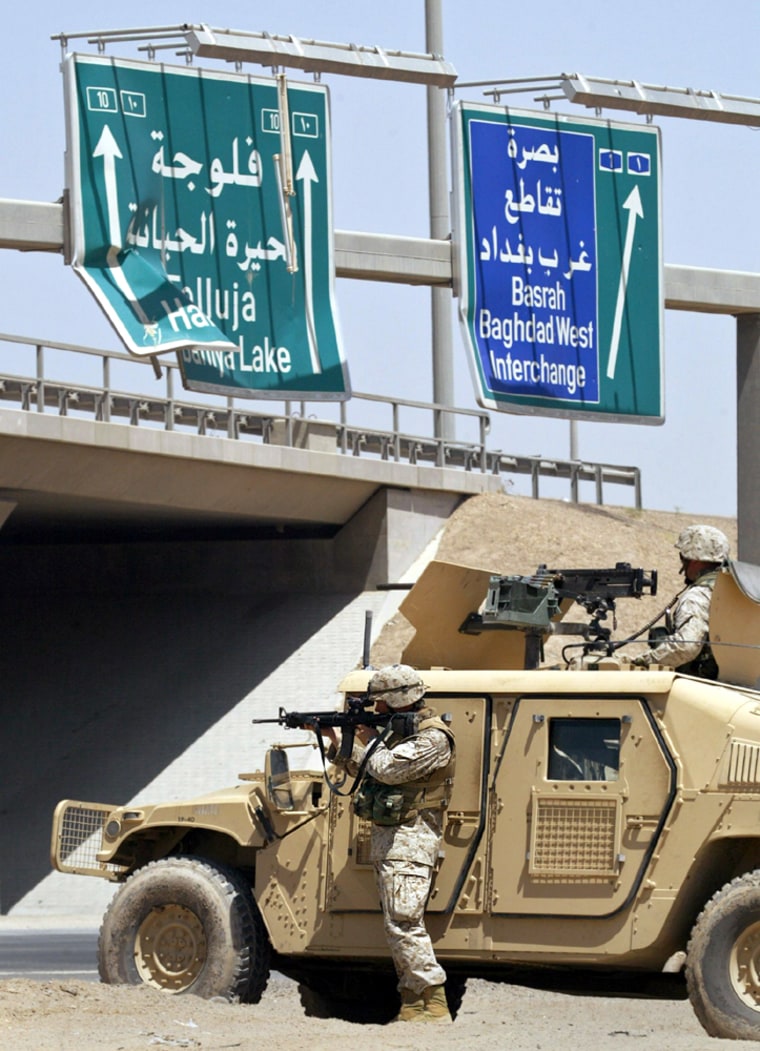For most of the first year after Saddam’s Hussein’s downfall, the Bush administration played down, or underestimated, the insurgency. By last spring, anti-American groups held sway over a wide swath of Iraqi population centers; attacks on U.S. troops soared in some areas, while others became no-go zones.
Since July, under the command of Gen. George Casey Jr., the White House has formulated a strategy to re-establish control in insurgent areas — one expected to be pursued by President Bush if he is re-elected.
The dress rehearsal was the two-day assault on Samarra, about 100 miles north of Baghdad in early October. After a negotiated deal to allow American troops into the city unraveled, some 5,000 U.S. and Iraqi troops, backed by helicopters and heavy artillery, launched one of the biggest offensives in 18 months, killing dozens of rebel fighters, and then installed a new city government and security force. Afterward, reconstruction funds poured into Samarra, with $2 million made immediately available.
There are a dozen or so other key cities that could come under assault in the coming months in the effort to create a stable environment for elections, scheduled for January. Next on the hit list is almost certainly Fallujah, to the west of Baghdad, where air strikes are under way.
A hard-ball approach is essential, argues Allard, to reduce concentrations of insurgents, and make the critical population centers safe for voting. “You give (the insurgents) a chance to work with you. If they won’t, you kill them,” he says. “That is the classic, quintessential offer they can not refuse.”
It’s a high-stakes gamble. In Samarra, the insurgency has been quelled for now, but the assault left the city traumatized and angry about civilian casualties. The calculation is that the trauma will quickly be offset by a public relations coup, so that insurgents cannot regain ground among the locals.
“The problem with the current approach ... is that it assumes that there is something tactically that we can do on the ground that is going to dry up the counterinsurgency,” says Bill Arkin, a military strategist and former Army intelligence analyst. But, he says, “there is an endless supply of 18-year-olds with guns in Iraq only too happy to risk their lives to kill the occupiers. The swamp has an endless supply of water.”
Democratic presidential candidate John Kerry has said his plan for Iraq focuses mainly on measures that could help take the steam out of Iraq’s insurgency.
Kerry said convincing Iraqis and the region that the United States doesn’t have long-term designs on Iraq is a “critical component of success in Iraq” — indicating that he will set a timetable for withdrawal of forces.
He has stressed faster reconstruction, getting more locals involved in rebuilding projects, accelerating training of Iraqi security and lobbying the international community for security to bolster elections.
Kerry, not surprisingly, has not disclosed a military strategy, though he has ruled out a rapid withdrawal that could open Iraq to civil war. But as commander in chief he, too, is faced with the problem of how much force to use to maintain order long enough to advance his other objectives.
